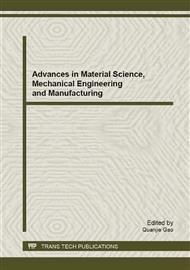p.18
p.23
p.27
p.31
p.35
p.40
p.44
p.49
p.53
Analysis and Research of the Combustion Process of YN4100QB Diesel Engine
Abstract:
In order to obtain the foundation to the research on the Diesel Engine YN4100QB combustion process, exhaust, the optimal design of combustion chamber and the useful information for the design of exhaust muffler, the geometric model and mesh model of a type internal combustion engine are constructed by using FIRE software to analyze the working process of internal combustion engine. Exhaust noise is the main component of automobile noise in the study of controlling vehicle noise. It is primary to design a type of muffler which is good for agricultural automobile engine matching and noise reduction effect. The present car mufflers are all development means. So it is bound to cause the long cycle of product development and waste of resources. Even sometimes not only can it not reach the purpose of reducing the noise but also it leads to reduce the engine dynamic. The strength of the exhaust noise is closely related to engine combustion temperature and pressure. The calculation and initial parameters are applied to the software based on the combustion model and theory. According to the specific operation process of internal combustion engine. Five kinds of common operation condition was compiled. It is obtained for the detailed distribution parameters of combusted gas temperature pressure . It is also got for flow velocity of the fields in cylinder and given for the relation of the parameters and crankshaft angle for the further research. At the same time NOx emissions situation are got. The numerical results show that not only does it provide the 3D distribution data in different crank shaft angle inside the cylinder in the simulation of combustion process, but also it provides a basis for the engine combustion ,emission research, the optimization design of the combustion chamber and the useful information for the designs of muffler.
Info:
Periodical:
Pages:
35-39
Citation:
Online since:
August 2013
Authors:
Price:
Сopyright:
© 2013 Trans Tech Publications Ltd. All Rights Reserved
Share:
Citation:


